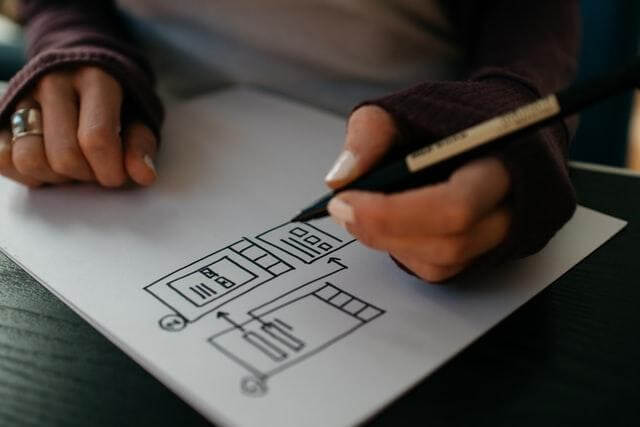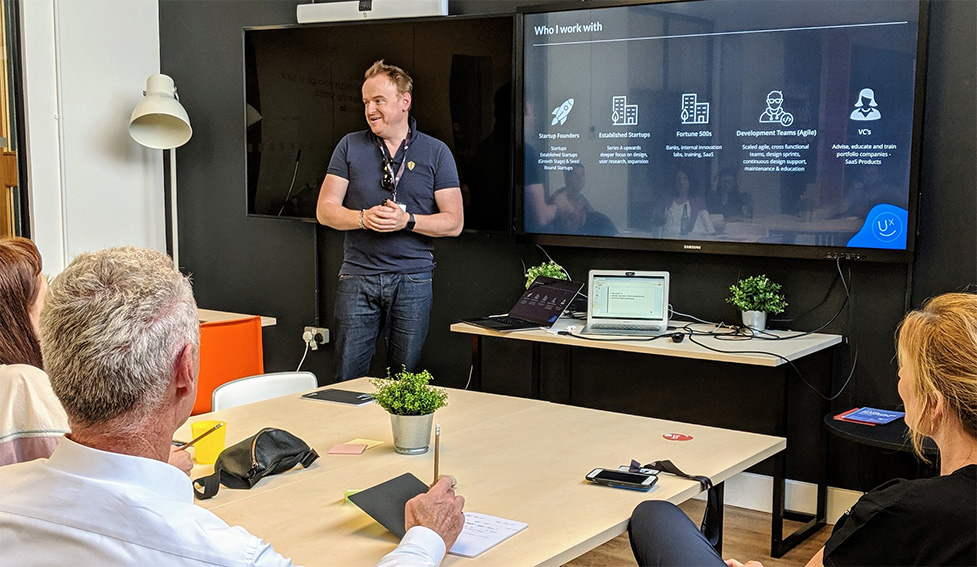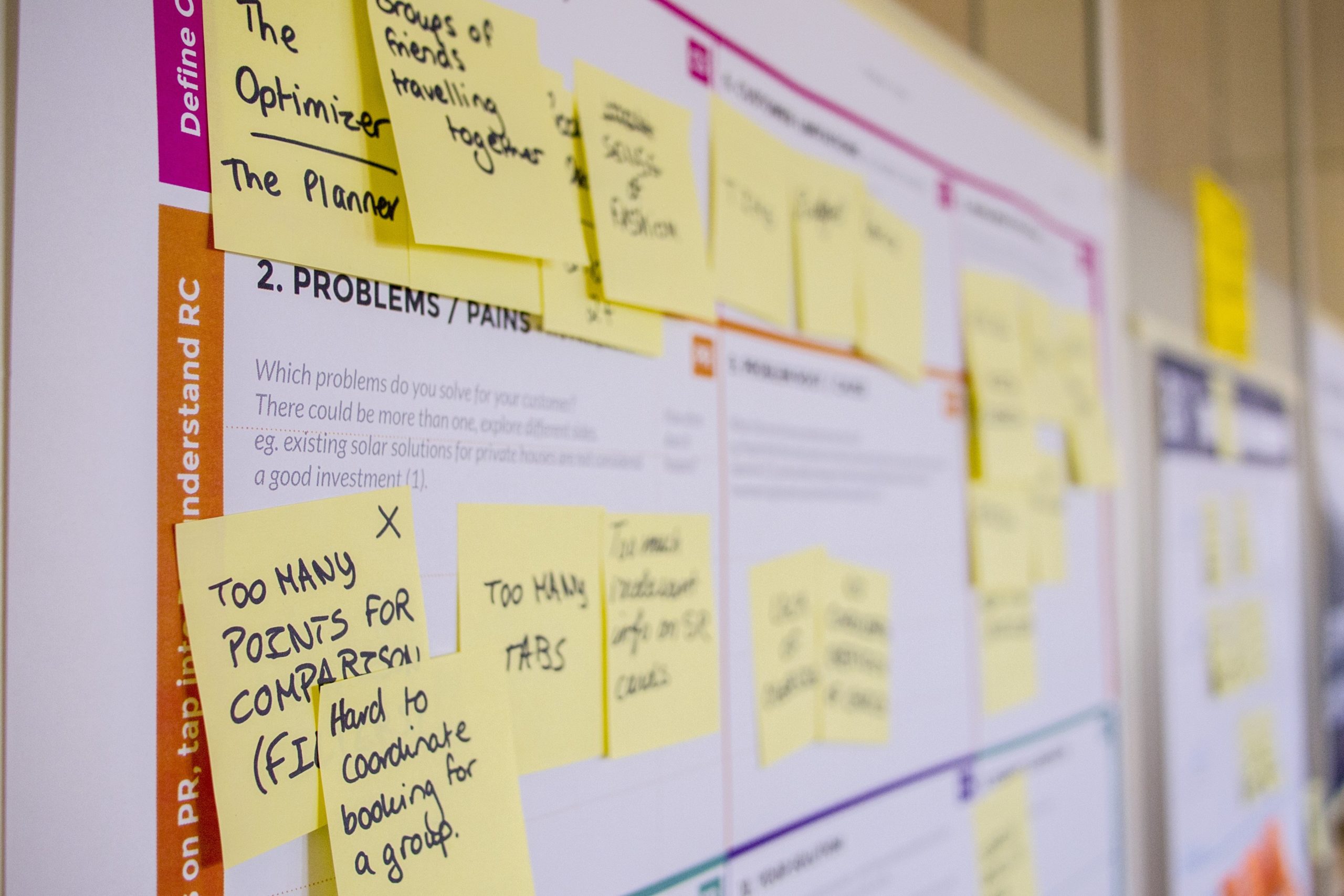

Don't you want to read? Try listening to the article in audio mode 🎧
UX stands for “User Experience”. As the name suggests, it’s not just about the object or the service itself, but about how the user experiences it, about his/her reactions and perceptions.
It’s about the relationship of the user with the object, product or service and for this reason, it deals not only with how the product or service looks but also with how it works.
The UX design process can so be defined as the set of activities that a UX designer must perform in order to define, test and refine a UX project. Each one of the ux design process steps is really important and is essential to the next (you can’t skip any of it!)
First of all: define your problem and needs
It’s quite common to read that the user experience design process starts with user research, which is true, but BEFORE doing that there is another step that should not be missed. It is important first to clearly understand and define the business needs and goals that you (if it’s a private project) or your client wants to accomplish. If you overlook this part you strongly risk - when it comes to design - missing fundamental issues and you may not obtain the results you expected. So first of all try to clearly define your problem, the reason why you are starting the project. Ask questions to the client, the product manager, the CEO...and do not start researching and wireframing before you have done this.Second step: do a lot of research
But not on Google! Your users should be the object of your research. This is at the heart of any UX design process and it’s quite obvious since UX, as we said, is about how the user reacts to things, something that you will only know if you understand who your user is. It is important to plan and carry out this research carefully. Failing to do so will make it very difficult to obtain accurate and valuable results. There are several techniques you can use: you can conduct live interviews with some selected users and watch them (or record them) while they interact with your site or product. There are also remote services that give you the same possibility without having to actually find and host people. You can administer questionnaires and surveys, or you could create “personas”, that are abstract representations of typical users, complete with detailed information on gender, occupation, hobbies, interests, habits, needs, expectations, etc.And now: design
After conducting your user research you can move to the part that is most commonly associated with user experience: information architecture and wireframing. You should identify, classify and structure the content of your website or app, clearly showing how a section is connected to another, how to display content and how to make it easily accessible by users (the technique most commonly used to do this is “cardsorting”). Meanwhile, you should also define “user flows”. These are hypothetical journeys and actions you think your users (that you now know thanks to the work you’ve done before) would most likely make or that you want them to make across your site. The wireframes are the tool you can use to display your findings, your design ideas and choices. You can use a wireframing app or program or create very simple mockups by drawing on paper.The final steps: prototyping and testing
Once you have defined the information architecture and the wireframes you can work on building a high fidelity prototype, something that is really close to what the true website will be, complete with graphical details, navigation and interactions. Only the actual code is missing. After you have a working prototype you can perform some usability testing, showing it to people who are unfamiliar with your design and watch how they interact with it while gathering their feedback. You should also give people specific tasks to perform (e.g. to buy a product or to complete a registration) to see if everything works as you had intended.
Article updated on: 09 August 2023

Don't Waste Your Talent. Turn It Into a Career With a Course That Fits Your Needs!
Talent Garden is your Digital Skills Academy, offering courses in Digital Marketing, UX Design, Digital HR and Data Analysis designed to launch your career.
Keep reading

4
min read
UX Design: The Challenges and Opportunities
"The next big thing in UX is already here and is being explored and built at great speed around us"- Mark Swaine The ...
Talent Garden
17/10/2019

5
min read
User Research: the key to successful project development
Making an analysis of the User Experience Research done on a product or a service, looking at what satisfies the user, ...
Talent Garden
15/05/2019

5
min read
Human-Centered Design Process: explanation and methodologies
Is it possible to design an interface, a user experience or a product from the concept of empathy? Is there a framework ...
Talent Garden
09/05/2022

2
min read
Meet our Students: Rebecca Kiechl – UX Design Fulltime Bootcamp
Rebecca Kiechl was a participant in our UX Design Fulltime Bootcamp happening 100% Online. Read the interview to find ...
Talent Garden
15/04/2021
